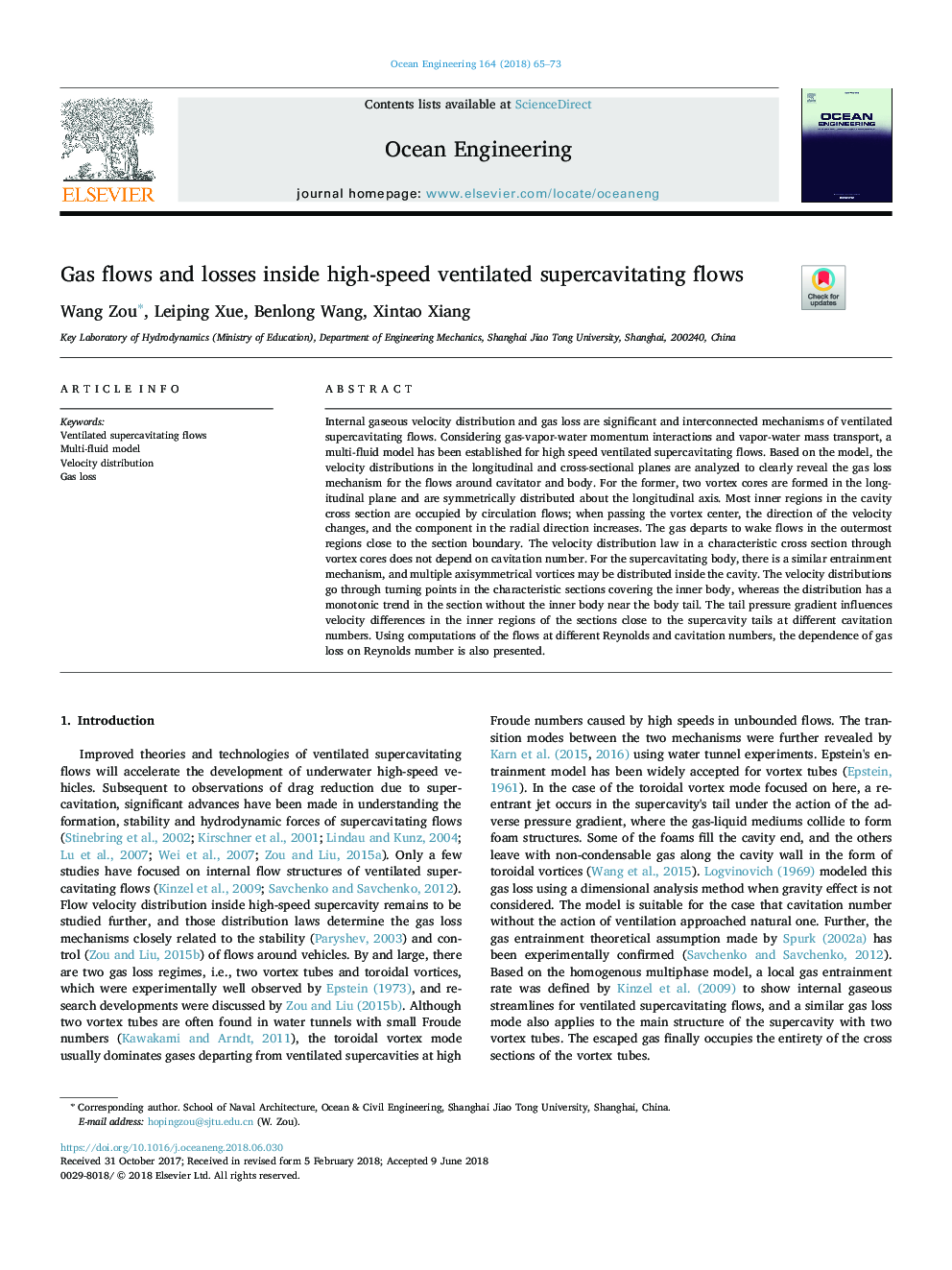| Article ID | Journal | Published Year | Pages | File Type |
|---|---|---|---|---|
| 8061852 | Ocean Engineering | 2018 | 9 Pages |
Abstract
Internal gaseous velocity distribution and gas loss are significant and interconnected mechanisms of ventilated supercavitating flows. Considering gas-vapor-water momentum interactions and vapor-water mass transport, a multi-fluid model has been established for high speed ventilated supercavitating flows. Based on the model, the velocity distributions in the longitudinal and cross-sectional planes are analyzed to clearly reveal the gas loss mechanism for the flows around cavitator and body. For the former, two vortex cores are formed in the longitudinal plane and are symmetrically distributed about the longitudinal axis. Most inner regions in the cavity cross section are occupied by circulation flows; when passing the vortex center, the direction of the velocity changes, and the component in the radial direction increases. The gas departs to wake flows in the outermost regions close to the section boundary. The velocity distribution law in a characteristic cross section through vortex cores does not depend on cavitation number. For the supercavitating body, there is a similar entrainment mechanism, and multiple axisymmetrical vortices may be distributed inside the cavity. The velocity distributions go through turning points in the characteristic sections covering the inner body, whereas the distribution has a monotonic trend in the section without the inner body near the body tail. The tail pressure gradient influences velocity differences in the inner regions of the sections close to the supercavity tails at different cavitation numbers. Using computations of the flows at different Reynolds and cavitation numbers, the dependence of gas loss on Reynolds number is also presented.
Related Topics
Physical Sciences and Engineering
Engineering
Ocean Engineering
Authors
Wang Zou, Leiping Xue, Benlong Wang, Xintao Xiang,
